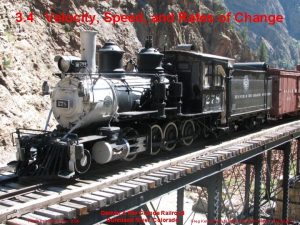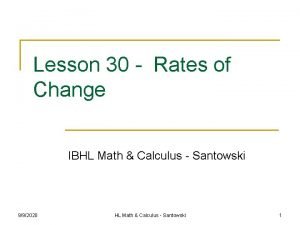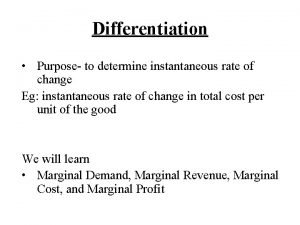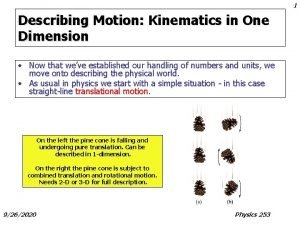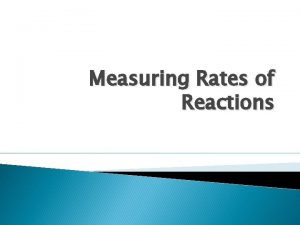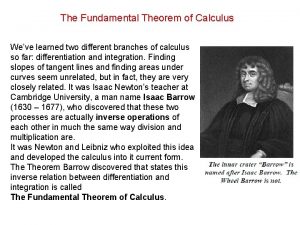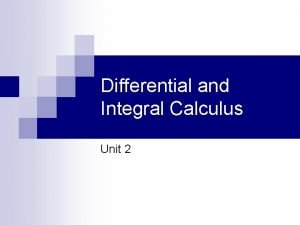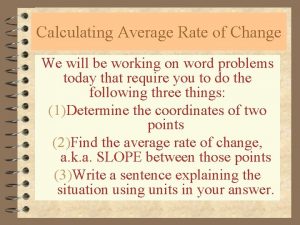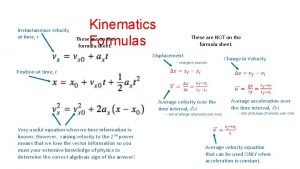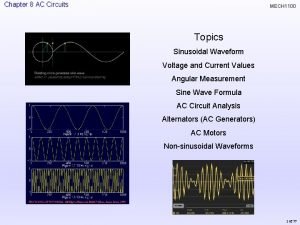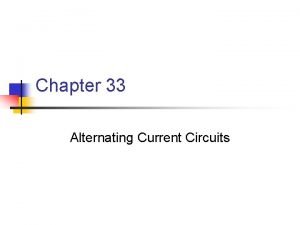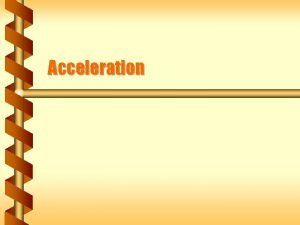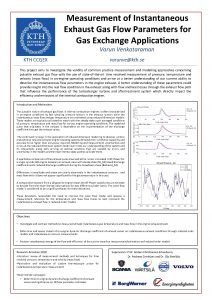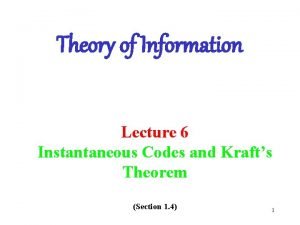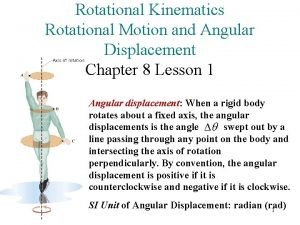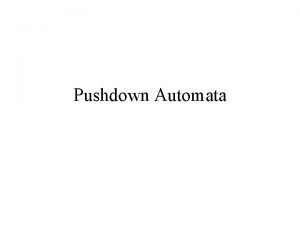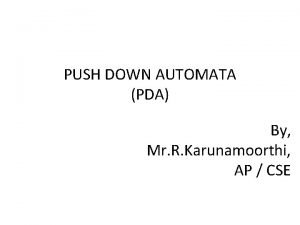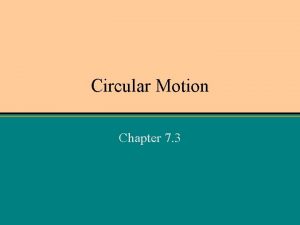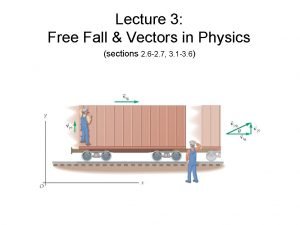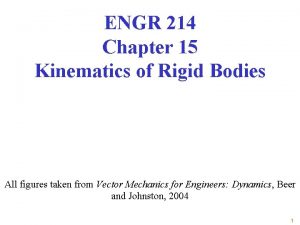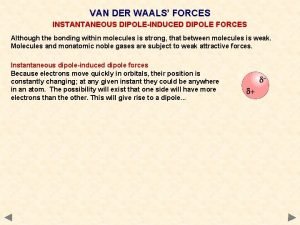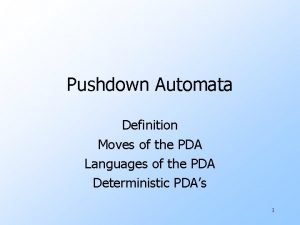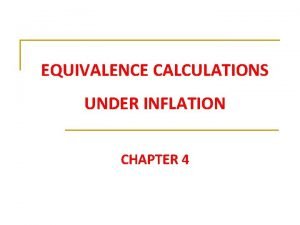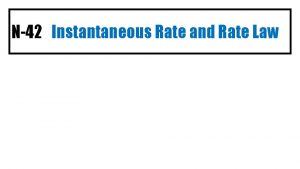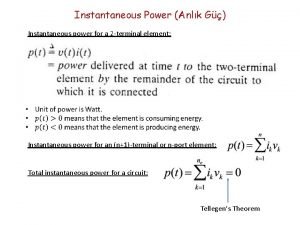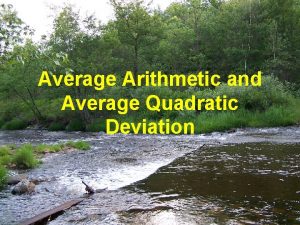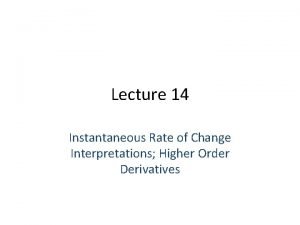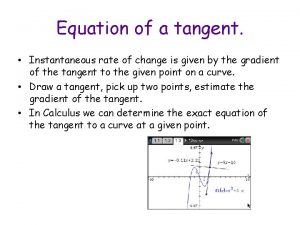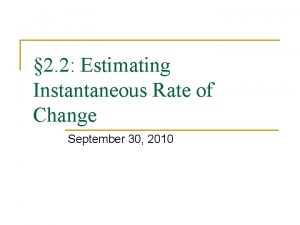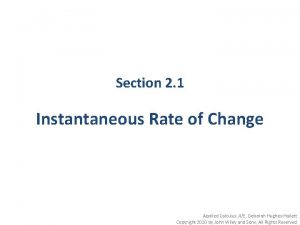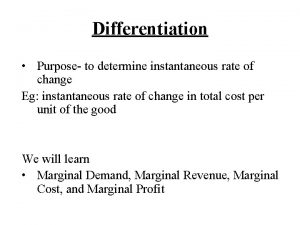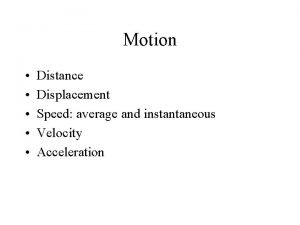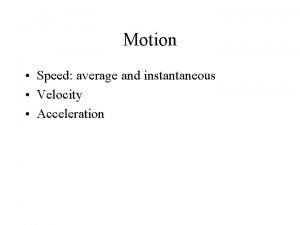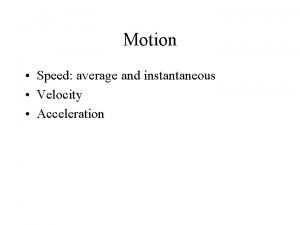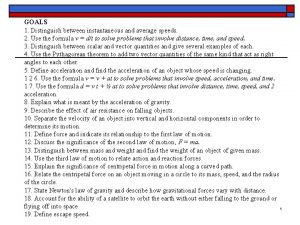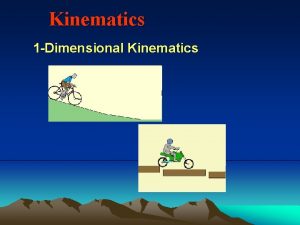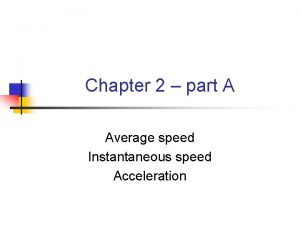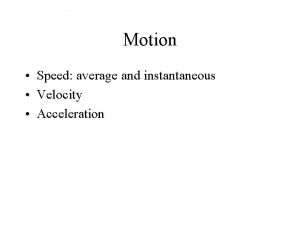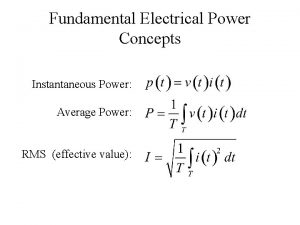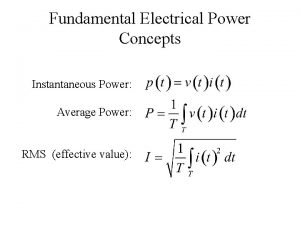Average Rate of Change vs Instantaneous Rate of









































- Slides: 41

Average Rate of Change vs. Instantaneous Rate of Change Bio Calculus

Galileo’s Free Fall Law • FREE FALL ▫ Dropped a solid object from rest with the fall distance proportional to the square of the time it has been falling

Galileo’s Free Fall Law • FREE FALL ▫ Dropped a solid object from rest with the fall distance proportional to the square of the time it has been falling �Let y = distance fallen in feet after t seconds

Galileo’s Free Fall Law Constant of proportionality

Galileo’s Free Fall Law Distance fallen measured in feet Distance fallen measured in meters

How do you find AVERAGE speed?

How do you find AVERAGE speed? • Distance covered Time elapsed

Example: Average Rate of Change • You committed a murder! ▫ The cops have you surrounded at the top of the Towers of America (750 feet up) ▫ You drop the murder weapon over the side.

Example: Average Rate of Change • You committed a murder! ▫ The cops have you surrounded at the top of the Towers of America (750 feet up) ▫ You drop the murder weapon over the side. • What is the average speed the murder weapon is traveling the first two seconds of the fall?

How do you find AVERAGE speed? • Distance covered Time elapsed

Average Speed • So an object’s average speed (toaster) during an interval of time is found by dividing the distance covered by the time elapsed

Example: Average Rate of Change • You drop the murder weapon from the top of the tower • What is the average speed the toaster is traveling the first two seconds of the fall? ▫ In other words from time = 0 to time = 2 (in seconds)

Average Rate of Change Formula

Galileo’s Free Fall Law

Graph it!

Graph it! (64 -0)/(2 -0) = 32

Example: Average Rate of Change • What is the average speed during the 1 -second interval between second 1 and second 2?

“Instantaneous” Rate of Change •

“Instantaneous” Rate of Change • t 0 time

“Instantaneous” Rate of Change • t 0 t 1 time

“Instantaneous” Rate of Change • Let’s call this distance h t 0 + h time

“Instantaneous” Rate of Change • t 0 + h h time

“Instantaneous” Rate of Change • t 0 + h h time

“Instantaneous” Rate of Change • t 0 + h h time

“Instantaneous” Rate of Change • t 0 t + h 0 h time

“Instantaneous” Rate of Change • t 0 t + h 0 h time

“Instantaneous” Rate of Change • t 0 t + h 0 h time

“Instantaneous” Rate of Change • Notice that we can let h (our distance of the time interval) get smaller and smaller but it can never equal zero NOTE: This is still the SLOPE formula

Back to Murder Example • Time interval of 0. 1 seconds ▫ Between 1. 1 and 1 second For exactly 1 second

Example •

Example •

Example • As h gets smaller and smaller t h 1 1 1 0. 01 0. 0001 speed 33. 6 32. 16 32. 0016 0. 00001 32. 00016 limit

LIMITS • Approaches a limiting values of 32 ft/sec as the time interval decreases • This suggest that the toaster is falling at a speed of 32 ft/sec at exactly t 0 = 1 second

CHECK IT! • Check Algebraically

CHECK IT! • Check Algebraically Remember h is the time interval, so as h approaches 0, the LIMIT is 32 ft/sec That is, 32 + 16(0) = 32

What are we doing? • Visualize

Secant Line vs. Tangent Line

Secant Line Tangent Line y = 32 x – 16 y = 33. 6 x – 17. 6

Instantaneous Rate of Change • Math language ▫ The instantaneous rate of change of a function f(x) at a point x = a is the limiting value of the average rate of change as the point x = a + h approaches x = a.

ARC IRC Example: average speed Example: instantaneous speed Slope of secant line Slope of tangent line Small gap/error 0 gap/error

Instantaneous Rate of Change • Also called ▫ Derivative ▫ Slope of graph of function ▫ Slope of tangent line to graph of function • NOTATION
 Is distance the derivative of velocity
Is distance the derivative of velocity What is the formula for average rate of change?
What is the formula for average rate of change? 30 rates
30 rates Refers to the instantaneous rate of change of profit
Refers to the instantaneous rate of change of profit Instantaneous velocity vs average velocity
Instantaneous velocity vs average velocity How to calculate the instantaneous rate of reaction
How to calculate the instantaneous rate of reaction Ftoc2
Ftoc2 Average rate of change exponential function
Average rate of change exponential function How to find average rate of change from a graph
How to find average rate of change from a graph Limit power rule
Limit power rule Average rate of change function
Average rate of change function Calculating average rate of change
Calculating average rate of change Branches of motion
Branches of motion Instantaneous velocity
Instantaneous velocity Kinematics formulas
Kinematics formulas Instantaneous dipole
Instantaneous dipole Instantaneous velocity formula
Instantaneous velocity formula Instantaneous voltage formula
Instantaneous voltage formula Instantaneous voltage formula
Instantaneous voltage formula Instantaneous acceleration
Instantaneous acceleration Instantaneous gas flows
Instantaneous gas flows Instantaneous value of the emf phasor
Instantaneous value of the emf phasor ©®tm meaning
©®tm meaning What is instantaneous code
What is instantaneous code Angular displacement
Angular displacement Pda
Pda Pda
Pda Instantaneous velocity circular motion
Instantaneous velocity circular motion The instantaneous description is pda shows
The instantaneous description is pda shows Fall vectors
Fall vectors Curvilinear translation
Curvilinear translation Instantaneous current
Instantaneous current Van der waals attraction
Van der waals attraction Xxxz0
Xxxz0 Inflation formula
Inflation formula Athlete heart rate
Athlete heart rate Average rate of reaction formula
Average rate of reaction formula Average person speaks at what rate
Average person speaks at what rate Average tax rate example
Average tax rate example Normal pulse rate
Normal pulse rate Cara menghitung mpi hotel
Cara menghitung mpi hotel Examples for physical change
Examples for physical change
